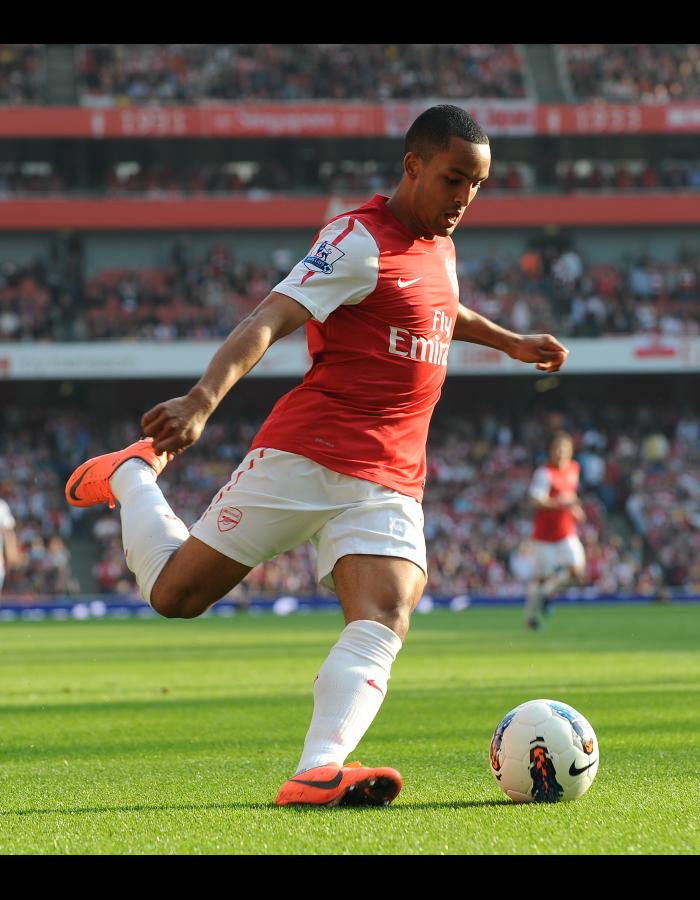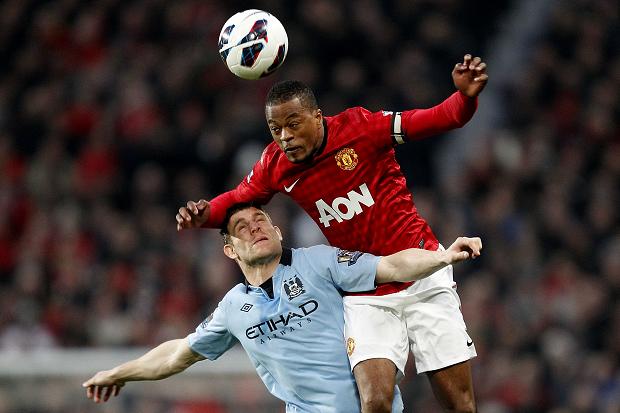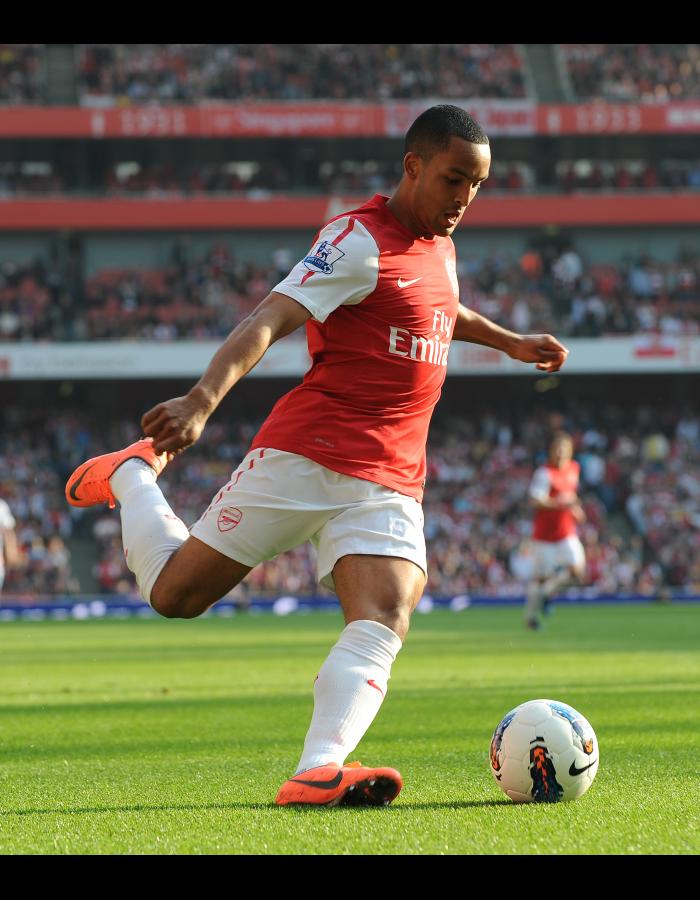Some days it’s good to take a step back from the daily deluge of information and try to organize what you think you have learned recently. I’ve been writing regularly on football analytics for about six weeks now (and off and on for seven months), and I’d say half the topics I’ve covered are based on poking around the data, and the other half are riffs on insight from other writers. I certainly feel a lot smarter about the game and about analytics than I did before, but what do I really know? And more generally, what do people in the analytics community think they know about the game that maybe they didn’t a month or two ago? Crosses Are Bad There are a couple of references for this that I really like. The first ones are from WillTGM, who looked at crossing generally as well as in the context of Liverpool, last summer. Will’s task was to look at whether Liverpool chose to play a heavy-crossing game tactically the year Kenny Dalglish was fired, and then to investigate whether that type of tactical choice is particularly effective at generating goals. I’m linking to the whole category of pieces he did, because they are really well written, explore a number of different aspects, and should basically be required reading for anyone interested in the topic from an analytics perspective. Will concludes that open play crossing is extremely difficult (20.5% accuracy vs. nearly 34% from set pieces), and that most teams aren’t very efficient at converting them into goals. Liverpool did indeed choose to cross the ball an awful lot that season, but goals did not pour in as a result. In general, nobody is effective at turning crosses into goals. (I’m shortchanging the work a bit here when I summarize – he covered all sorts of useful stuff. Just go read them.)  The second one is from @footballfactman, looking at Theo Walcott’s crossing, which is deemed a) generally inaccurate and b) surprisingly devastating. Paul digs a little deeper and discovers that most of Walcott’s assists are from short (presumably low) crosses and pullbacks. In fact, from having watched Arsenal constantly, I would guess the majority of Theo’s crosses period have been low and hard, and he had an almost psychic relationship with RVP and that near post run. This is dramatically different from what you would typically get from Golden Balls or Leighton Baines. Because of this style, they are easier for defenders to simply cut out and clear, but they also result in a reasonable amount of goals when completed. It would be interesting to see how many of the cutouts from this type of pass result in possession going right back to the attacking team, since they don’t see very controllable. The point here is that crossing is really hard. Even Baines, who is one of the best in the Premier League at completing them, only succeeds in finding a teammate 30% of the time. Headed Shots Are Bad This one is fascinating because if you do the surface analysis, it looks like this.
The second one is from @footballfactman, looking at Theo Walcott’s crossing, which is deemed a) generally inaccurate and b) surprisingly devastating. Paul digs a little deeper and discovers that most of Walcott’s assists are from short (presumably low) crosses and pullbacks. In fact, from having watched Arsenal constantly, I would guess the majority of Theo’s crosses period have been low and hard, and he had an almost psychic relationship with RVP and that near post run. This is dramatically different from what you would typically get from Golden Balls or Leighton Baines. Because of this style, they are easier for defenders to simply cut out and clear, but they also result in a reasonable amount of goals when completed. It would be interesting to see how many of the cutouts from this type of pass result in possession going right back to the attacking team, since they don’t see very controllable. The point here is that crossing is really hard. Even Baines, who is one of the best in the Premier League at completing them, only succeeds in finding a teammate 30% of the time. Headed Shots Are Bad This one is fascinating because if you do the surface analysis, it looks like this.  That image is taken directly from Colin Trainor’s seminal examination of the subject , and if you stop at the surface examination you suddenly think “WOW, headers are the way to go. They are just as accurate as ground shots, they are three times less likely to be blocked, 10% less likely to be saved (based on percentage comparison), and 33% more likely to score a goal. Those numbers are massive!” Not so fast, my friend. This… this is the area where good, detailed analysis comes into play. When controlled for location as Colin did, headers are considerably worse at scoring than ground shots in every single spot on the pitch. The only thing that makes headers look so amazing is that they are all taken relatively close to the goal. Meanwhile, ground shots come from everywhere (even though they shouldn’t - that’s a topic for a different day). Headed Passes Are Bad Too This one came up as a result of the piece I wrote complaining about how big forwards don’t fit into Arsenal’s general strategy, so why does Wenger keep buying them?!? Anyway, it sparked a bigger discussion that not only deserves its own article, it also indicates a need to change the way we break out and display passing stats. Here’s the quick hit:
That image is taken directly from Colin Trainor’s seminal examination of the subject , and if you stop at the surface examination you suddenly think “WOW, headers are the way to go. They are just as accurate as ground shots, they are three times less likely to be blocked, 10% less likely to be saved (based on percentage comparison), and 33% more likely to score a goal. Those numbers are massive!” Not so fast, my friend. This… this is the area where good, detailed analysis comes into play. When controlled for location as Colin did, headers are considerably worse at scoring than ground shots in every single spot on the pitch. The only thing that makes headers look so amazing is that they are all taken relatively close to the goal. Meanwhile, ground shots come from everywhere (even though they shouldn’t - that’s a topic for a different day). Headed Passes Are Bad Too This one came up as a result of the piece I wrote complaining about how big forwards don’t fit into Arsenal’s general strategy, so why does Wenger keep buying them?!? Anyway, it sparked a bigger discussion that not only deserves its own article, it also indicates a need to change the way we break out and display passing stats. Here’s the quick hit:
| Player | Ground PS% | Ground Pass | Head PS% | Headed Pass | Total PS% |
|---|---|---|---|---|---|
| Giroud | 77.9% | 430 | 39.3% | 234 | 64 |
| Dzeko | 79.5% | 517 | 32.1% | 131 | 69 |
| Ibrahimovic | 78.5% | 1165 | 41.4% | 111 | 75 |
| Van Persie | 86.4% | 831 | 39.6% | 91 | 80 |
| Lewandowski | 78.9% | 560 | 42.3% | 123 | 72 |
| Carroll | 81.8% | 340 | 38.6% | 321 | 61 |
*pause for effect*
Headed passes from forwards are half as likely to be completed as ones on the ground.
There is sense to this. The hits that players take when trying to head the ball would be instant fouls if anyone did the same when they are standing on the ground. Additionally, the quality of the aerial ball itself is so much more important than the quality of a ball played to your feet. A headed pass is a first-time pass, every time. Oh, and unlike a pass along the ground, the trajectory of the ball now exists in three dimensions instead of two. Heading is just really bloody hard. Andy Carroll has nearly equal amounts of attempted passes with his feet as his head - of course he's going to look terrible. Maybe the problem isn't with passing skill with the big forwards, maybe the problem lies with the approach? Obviously it’s an important part of the game, but heading the ball simply isn't something you want your offensive players to do a lot of if you can help it. Passing Bleed Is Bad I discussed this in brief when I talked about Olivier Giroud at Arsenal, but it deserves application on a broader scale. Central midfielders pass the ball 50 to 80 times a match. A 5% difference in player completion percentage is 3-4 passes a match. A 10% difference means 6-8 more failed passes in the central midfield, and at that point it really starts to matter. It also has a trickle-down effect into what kind of passes your team has to make to be safe, and what kind they are capable of making to attack (think long, diagonal balls to wide forwards on the counter-attack). Passing percentages vary widely due to tactical considerations, but if you control for those types of things, you want the best passers possible all over your squad. Choosing a player with a 5% lower success rate that makes up for it in other areas is fine, occasionally. However, 5% worse across an entire team that passes 500 times a match results in 25 more possessions for the opposition, every game. Lesser passers bleed away possession to the opposition, and eventually that bleeding will lead to goals. Football is Inherently About Percentages It’s true, and the game does not give a damn whether people care about this or not, because it is imposed as one of the basic structures of playing football. I know that’s statty/geeky as hell, but it is a simple, obvious truth. The sooner this is accepted, the sooner people can go about applying the principles to make their teams better. Conclusion: Strategies that revolve around crossing and heading are hugely inferior strategies. Look, this isn’t my conclusion, this is what math says. Crossing is hard. Heading is hard. Passing the ball as a header? Also really hard. So why would any manager choose to do it regularly? I have two theories on this, from two different angles. 1) This approach makes sense if it is rare and teams are unprepared for it. If the vast majority of the league plays normally, and your squad employs a physical, aerial approach, teams may be uncomfortable playing that style of football and you have an advantage. However, once a number of teams play this style, counter-strategies (like putting four centerbacks in the lineup across the back line and/or playing all your tall players) come into play that destroy this. 2) It’s cheaper to play this way than competing with other teams for “normal” players. I might believe this if I didn’t see how much Sam Allardyce and especially Stoke had spent on players in the last five years. So uh yeah… I don’t think either of my theories make logical sense anymore. Therefore I honestly don’t know why any smart manager, and especially an analytically savvy one, would choose this avenue for their team. Mixed Strategies Are Not Only Good, They Are Vital So this is where it gets tricky. Crosses are bad. Balls in the air are bad. Headed shots are inferior to ones on the ground from the same location. BUT 
